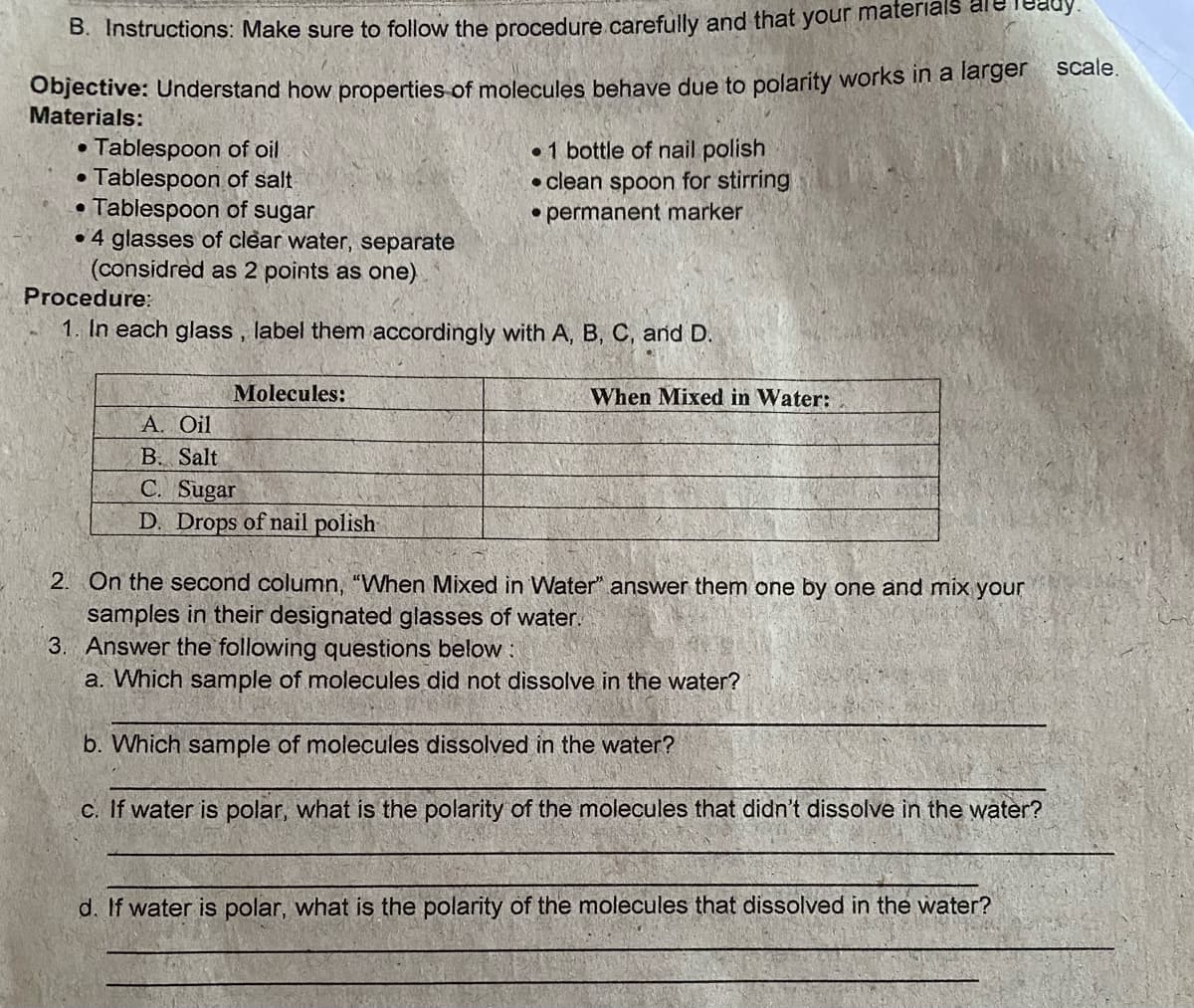B. Instructions: Make sure to follow the procedure carefully and that your mater Objective: Understand how properties of molecules behave due to polarity works in a larger scale. Materials: • Tablespoon of oil Tablespoon of salt Tablespoon of sugar • 4 glasses of clear water, separate (considred as 2 points as one) •1 bottle of nail polish • clean spoon for stirring • permanent marker Procedure: 1. In each glass, label them accordingly with A, B, C, and D. Molecules: When Mixed in Water: A. Oil B. Salt C. Sugar D. Drops of nail polish 2. On the second column, "When Mixed in Water" answer them one by one and mix your samples in their designated glasses of water. 3. Answer the following questions below : a. Which sample of molecules did not dissolve in the water? b. Which sample of molecules dissolved in the water? c. If water is polar, what is the polarity of the molecules that didn't dissolve in the water? d. If water is polar, what is the polarity of the molecules that dissolved in the water?
Types of Chemical Bonds
The attractive force which has the ability of holding various constituent elements like atoms, ions, molecules, etc. together in different chemical species is termed as a chemical bond. Chemical compounds are dependent on the strength of chemical bonds between its constituents. Stronger the chemical bond, more will be the stability in the chemical compounds. Hence, it can be said that bonding defines the stability of chemical compounds.
Polarizability In Organic Chemistry
Polarizability refers to the ability of an atom/molecule to distort the electron cloud of neighboring species towards itself and the process of distortion of electron cloud is known as polarization.
Coordinate Covalent Bonds
A coordinate covalent bond is also known as a dative bond, which is a type of covalent bond. It is formed between two atoms, where the two electrons required to form the bond come from the same atom resulting in a semi-polar bond. The study of coordinate covalent bond or dative bond is important to know about the special type of bonding that leads to different properties. Since covalent compounds are non-polar whereas coordinate bonds results always in polar compounds due to charge separation.


Trending now
This is a popular solution!
Step by step
Solved in 2 steps with 1 images









